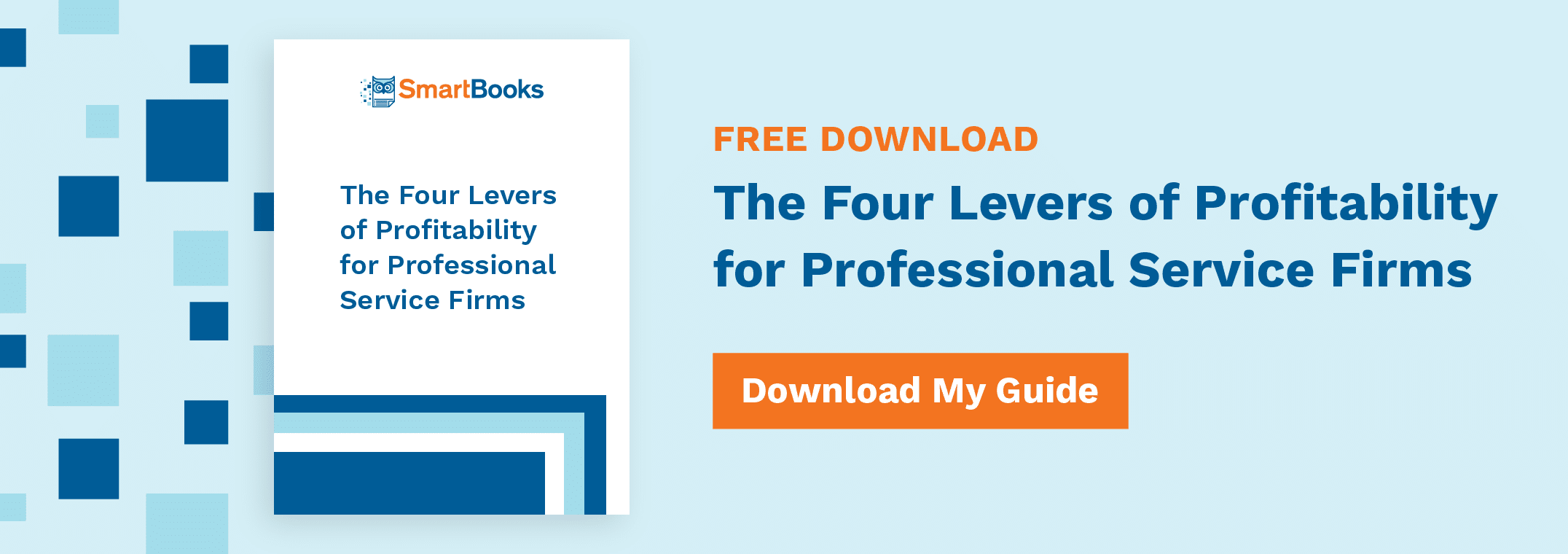How Pricing Might Be at the Root of Your Financial Challenges

Does your firm have an efficient pricing model? Are the full spectrum of industry conditions being assessed in your firm’s pricing calculations? And is each team member’s talent being fully utilized in the most profitable way?
Each of these issues can bleed away at a service firm’s profitability. However, these issues also offer opportunities for companies that know how to leverage their pricing strategies to drive consumer demand.
Find the Right Pricing Model
Research by Deloitte shows that 59 percent of businesses that outsource services to professional firms do so for the cost-saving benefits of outsourcing. As such, a service firm’s pricing model will have a huge impact in client satisfaction in the short-term, and retention in the long-term.
Professional service firms have two basic options for pricing: hourly and fixed. Depending on which pricing model gets chosen and how the rates are calculated, this decision can make a huge impact on a firm’s long-term profitability.
When firms price their services on an hourly basis, the total service price comes out to the firm’s hourly rate minus any hours deemed “no-charge” or otherwise non-billable. On the other hand, when firms price services on a fixed price basis, they may speak in terms of prices realized; a metric called Price Realization. This can be calculated by dividing service revenue by the hours needed to deliver the service. This simple metric represents how well a firm’s pricing projections meet the company’s expectations.
For both options, the cost to deliver services stays relatively fixed. The majority of operating costs will come from payroll and other employee management costs; thus, higher prices (whether fixed or hourly) will result in a higher profit margin.
Pricing Considerations
Whether a professional service firm operates on an hourly or fixed price basis, one thing remains consistent: the pricing a firm is able to charge is linked to the customer’s perception of the service. If the service is deemed valuable and the company’s reputation is stellar, it improves this perception—and the customer’s willingness to pay more.
In truth, these considerations are some of the most complicated aspects of a firm’s pricing strategy. Aside from the pricing models themselves, companies have to consider how other variables may influence their pricing:
- Company history and expertise
- Consistency in service
- Marketing and sales skills
- Prestige in their industry
- Responsiveness to customer issues
Each of these factors influences the customer’s perception of the service firm, and what they’ll expect to pay for a given service. Of course, these need to be balanced against what the firm’s competitors are doing in the marketplace. This is part of a larger strategy known as value-based pricing; a more flexible pricing arrangement that goes beyond cost-based pricing models.
Talent Utilization
Naturally, the firm’s talent utilization rates will have a big impact on profitability. Consider the expenses of assigning a project to a senior level employee compared to a junior staffer. This isn’t necessarily a problem when clients are charged by the hour, but when pricing is fixed, the senior staffer’s expensive rates can eat away at the firm’s profits. In this kind of fixed price engagement, the firm is incentivized to delegate as much of the work as possible to junior-level employees who are able to do the work at an acceptable level of quality.
This utilization strategy can be a big point of profitability for service firms with fixed revenue. Under these circumstances, it’s beneficial to have these lower-cost resources delivering the bulk of repeatable tasks while higher-level work is left to the senior team. This benefit also applies to the way companies calculate labor price multiples; by allocating talent in this way, firms have additional incentive for obtaining maximum leverage from each senior team member across multiple clients.
Maximizing Pricing-Driven Profitability
Customers are becoming increasingly sensitive to unexpected costs and risks in the services they use. And given that price is still one of the biggest competitive differentiators in the professional service market, it’s crucial that companies manage their pricing strategies with care. For firms that can effectively charge more for their services, the rewards can be significant with even modestly higher prices. Firms tend to have operating costs that are fixed—think payroll, rent and IT expense—and extra dollars of revenue drop to the bottom line as extra dollars of profit. If a firm with a 5% profit margin is able to increase its pricing on average by 5%, then its profits double from 5% to 10%.
Interested in learning more about how to optimize profitability for your organization? Download our free guide.
